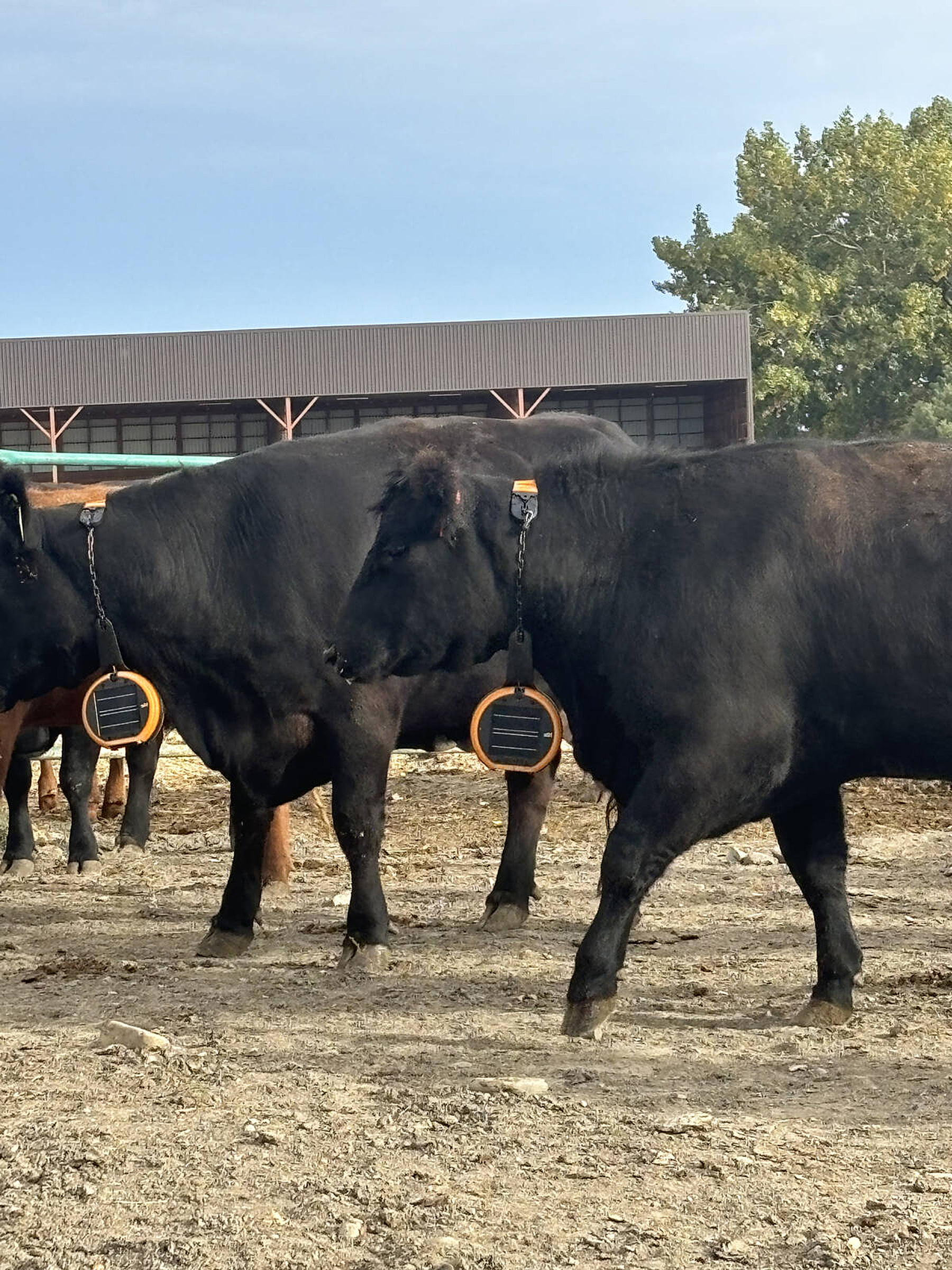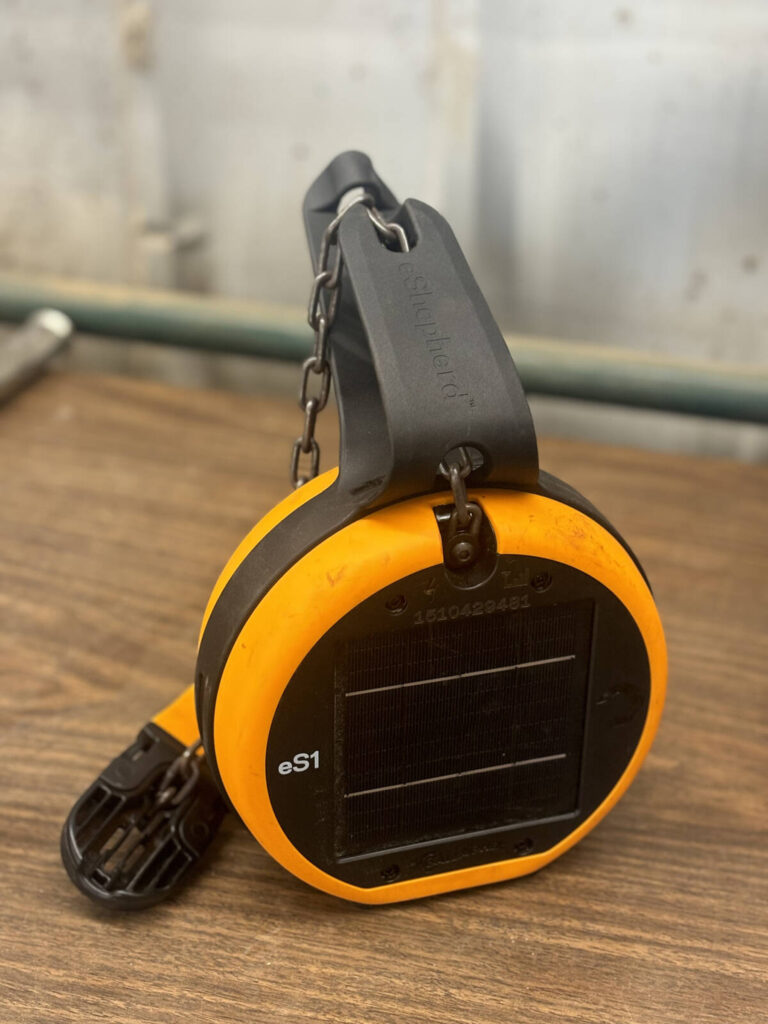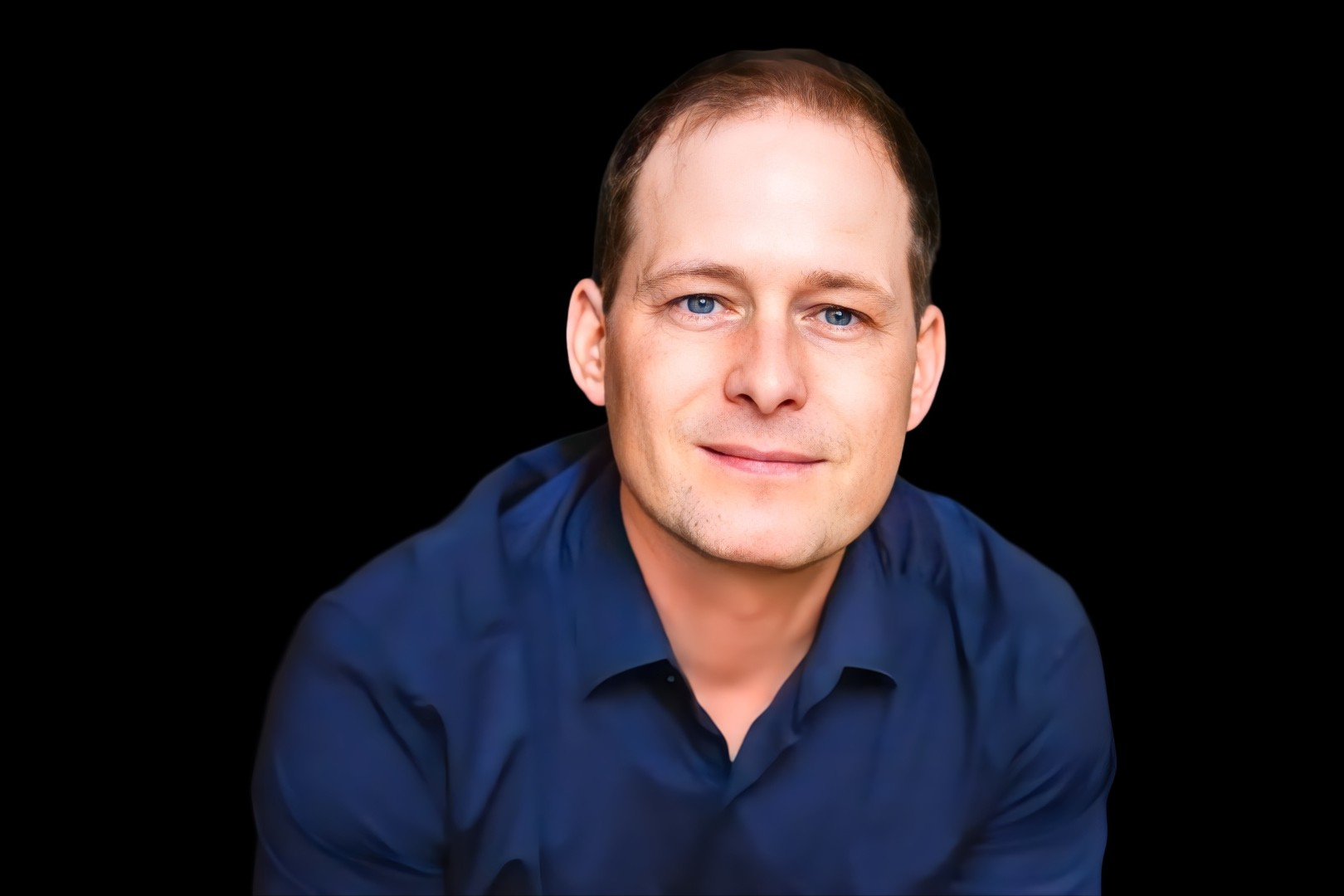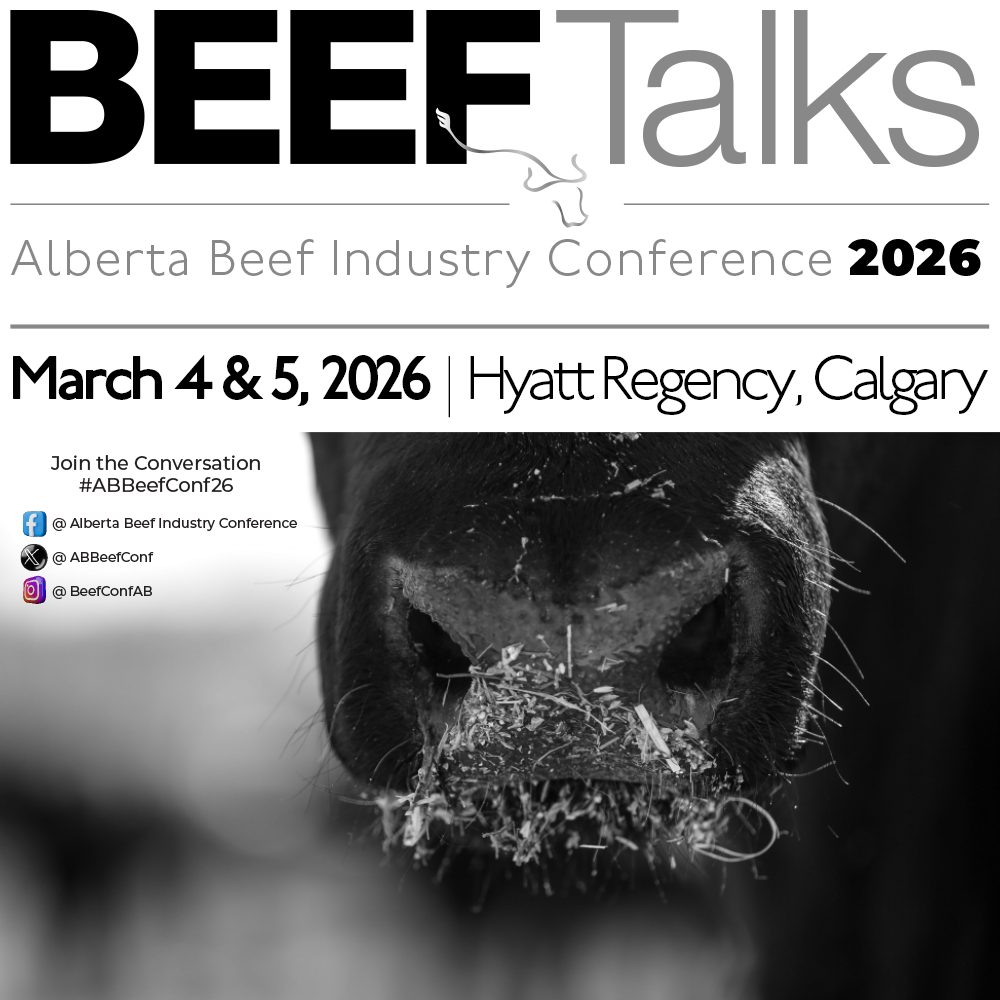AB Direct - Steers
Rail: ---
AB Direct - Heifers
Rail: ---
US Trade- Steers
Rail: 495.00 del
US Trade - Heifers
Rail: 495.00 del
Canadian Dollar
0.06

RDAR expands grazing program to include virtual fencing
RDAR has expanded its OFCAF rotational grazing program to include virtual fencing — a GPS-based technology helping Alberta producers manage pastures, save labour, and improve sustainability with up to $75,000 in funding support.
The new funding stream is designed to help cattle producers adopt “invisible fence” systems that use GPS-enabled collars and base stations to create and manage grazing zones through a computer or smartphone. The collars train livestock to recognize virtual boundaries through sound cues and, if necessary, mild corrective pulses.
RDAR says the technology could make rotational grazing easier and more precise, improving soil health and biodiversity while reducing overgrazing and manual labour.

Gallagher eSheperd technology. Photo credit: Brianna Elliot
Smart system with multi-advantages
“Virtual fencing is more than a replacement for wire,” says Richard Hilton, Manager of Stakeholder Relations & Communications, RDAR. “It’s a smart grazing system that gives producers more control, better data, and the flexibility to move paddocks in minutes instead of hours or days.”
Eligible ranchers can receive up to $75,000 for a complete virtual fencing system, including GPS collars, base stations, and other rotational grazing infrastructure. A 15 per cent cost-share contribution is required, and funds for 2025 are limited.
To qualify, applicants must be active Alberta producers with at least $25,000 in gross farm income. Projects must be new practices, not routine operations, and applicants will need to work with a Professional Agrologist or Certified Crop Advisor to develop a Beneficial Management Practice Action Plan.
For full eligibility details and application information, visit rdar.ca/funding-opportunities/ofcaf.
Read more about about this opportunity on page 28 of ABP Magazine.


